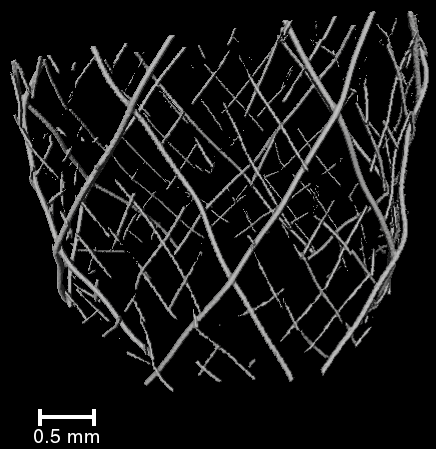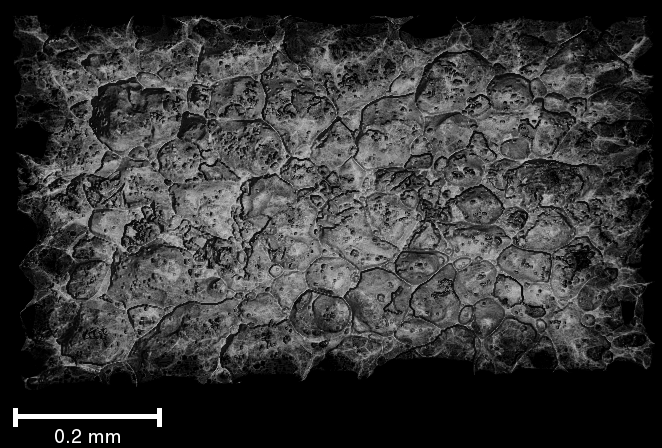Research activities
In situ/operando X-ray imaging of materials
Functional materials are critical in a number of applications, including healthcare, mobility and as structural materials. High-resolution micro computed tomography (µCT) can be used to understand their dynamic behaviour and functionality over time, in particular if employed in situ.
The chair “Data-Driven Analysis and Design of Materials” utilizes both at laboratory and synchrotron sources in order to elucidate biomaterial functionality, for example in the case of biodegradable implants (cf. Fig. 1), while additionally assessing the impact and response of the surrounding tissue. Our collaborations include the investigation of glass foams (cf. Fig. 2), polymeric scaffolds and drug reservoirs. In addition to the imaging itself, we are experts in image processing. To this end, we utilize deep learning-assisted methods and provide automated workflows to extract all relevant knowledge from the attained data. Additionally, we can provide support in image-based modelling, for example in transport-reaction problems.
We are happy to provide you with our expertise in imaging and image processing.
Computational and data-driven modelling of biomaterials
The second pillar of research at the chair for Data-driven Analysis and Design of Materials focusses on computational and data-driven modelling of (bio)material behaviour. In this respect, we develop models to describe the functionality of the material over time and the corresponding tissue response (cf. Fig. 3).
[1] Pohl et al. (2025): Computational modelling of bone growth and mineralization surrounding biodegradable Mg-based and permanent Ti implants. In: Computational and Structural Biotechnology Journal. DOI: 10.1016/j.csbj.2025.02.027.



